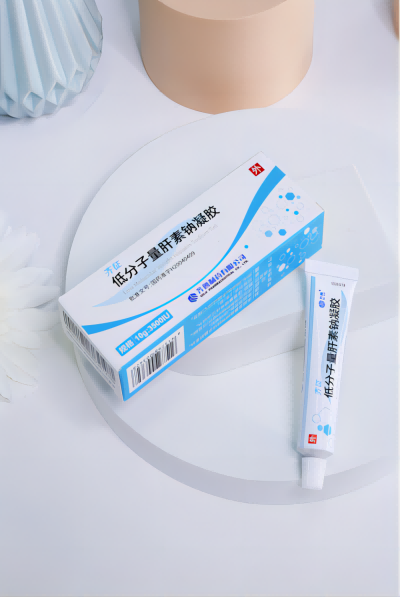Scars are one of the main skin problems that affect people's appearance, and severe scars can even cause limb dysfunction, bringing great pain to people. So, how to effectively treat scars on the body? What is the efficacy of low molecular weight heparin sodium gel, the most commonly used external drug for scar removal at present?
1. Scar repair and wound healing are related.
Scar formation is an inevitable part of the wound repair process, and scars begin to form during the wound healing process. There are four stages of wound healing:
1. Exudation stage (4-5 days): When a wound occurs, the body activates the coagulation mechanism, and blood cells and platelets play a role in stopping bleeding. The blood will instantly coagulate and enter the inflammation and exudation stages, causing local reactions such as redness and swelling.
2. Collagen stage (6-30 days): Fibroblasts begin to produce collagen fibers to assist in repair, leading to scar tissue proliferation and hardening.
Attention at this stage: Some medications can be used to prevent scar formation.
3. Maturity stage (1-3 months): Collagen fibers continue to synthesize while also undergoing continuous decomposition, gradually forming neatly arranged bundles; Capillary occlusion, reduced quantity, and stable state of skin scars.
Attention at this stage: During the recovery process, if the cell arrangement is disrupted, excessive proliferation of fibroblasts can easily form hypertrophic scars.
4. Reshaping stage: After trauma repair is completed, the scar begins to undergo degenerative changes. Clinically, the scar congestion subsides, and the color is slightly darker than normal skin tone, light brown, or slightly lighter pinkish white.
Attention at this stage: At this stage, the scar has stabilized. If it still appears as raised, depressed, pigmented, or lost, it is necessary to seek timely treatment at a professional scar repair center.
II. Efficacy of low-molecular-weight heparin sodium gel
The early stage of hyperplasia is the key period for scar repair! Starting 1-2 months after injury, scars begin to turn red, hard, and itchy, indicating that the scars have entered the proliferative phase. During this period, scars will gradually grow higher than the surface of the skin, with a very prominent appearance. Early treatment of scars is mainly to shorten the growth period. It is best to actively treat scars before they start to turn red and hard. It is best to prevent scars from growing and directly shrink. This way, the appearance of scars formed is most satisfactory and greatly shortens the duration of scars. In scar repair therapy, heparin can alleviate pain, anticoagulate, inhibit inflammatory reactions, promote vascular regeneration, restore local blood supply, and affect collagen synthesis and degradation. After wound healing, the skin becomes smooth, reducing scars and scar contractures.
Qizheng low-molecular-weight heparin sodium gel produced by Qilu pharmaceutical Group contains low-molecular-weight heparin sodium, which has more pure pharmaceutical ingredients and lower incidence of adverse reactions. In terms of dosage form, Qizheng low-molecular-weight heparin sodium gel combines the advantages of cream and ointment, with mild effect and better skin touch.
Through clinical research, it also shows that in the early stage of scar recovery, the use of Zizheng low-molecular-weight heparin sodium gel can make scar recovery better.
The above is about the efficacy of low-molecular-weight heparin sodium gel. I hope you can seize the critical period to remove scars as soon as possible!







Comments (0)
Leave a Comment
No comments yet
Be the first to share your thoughts!